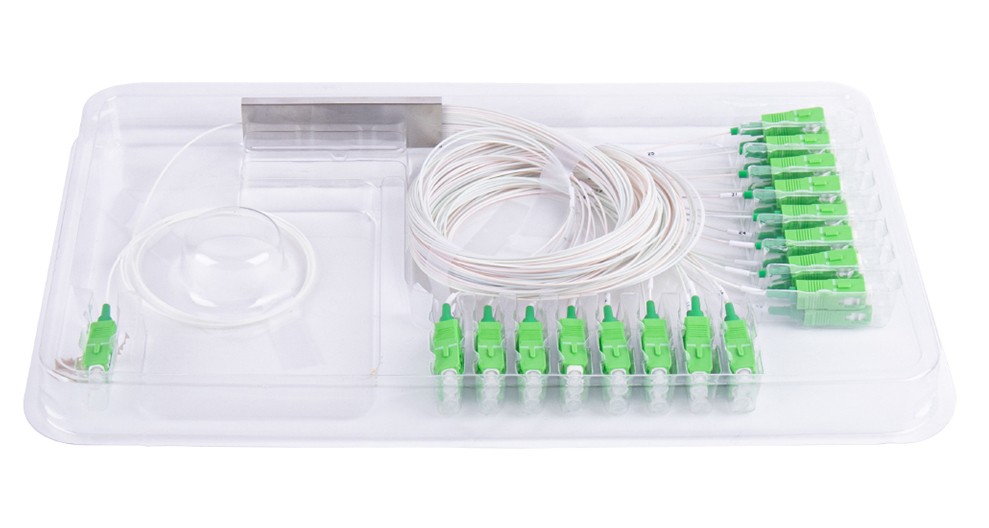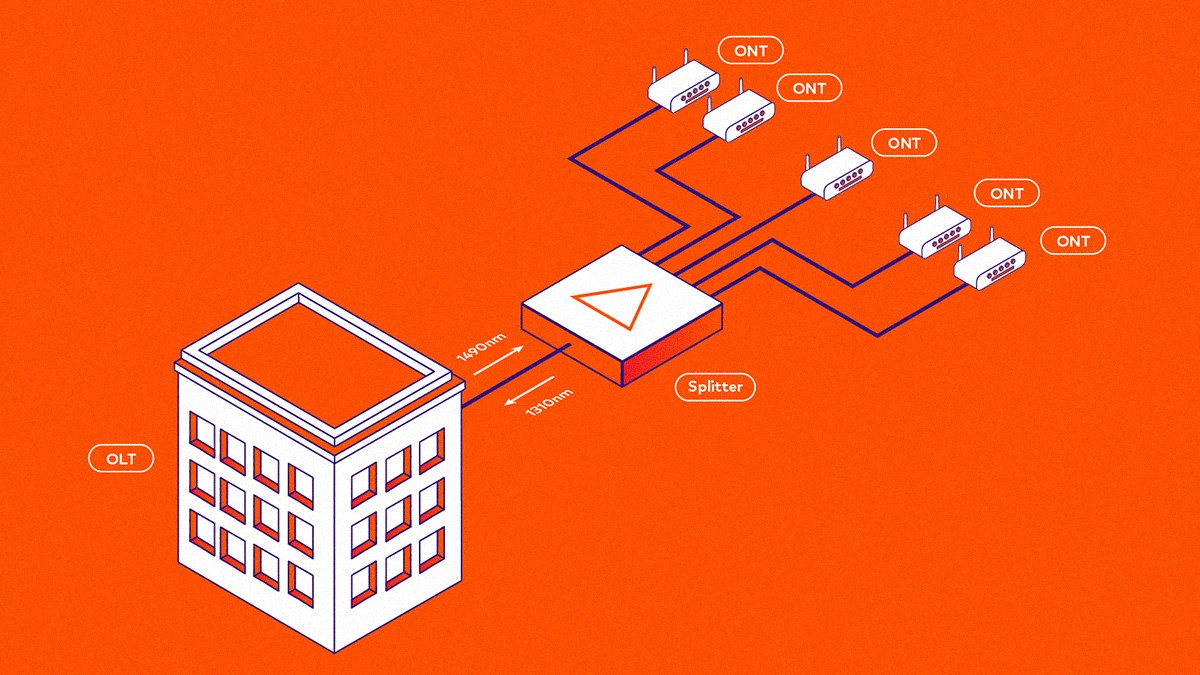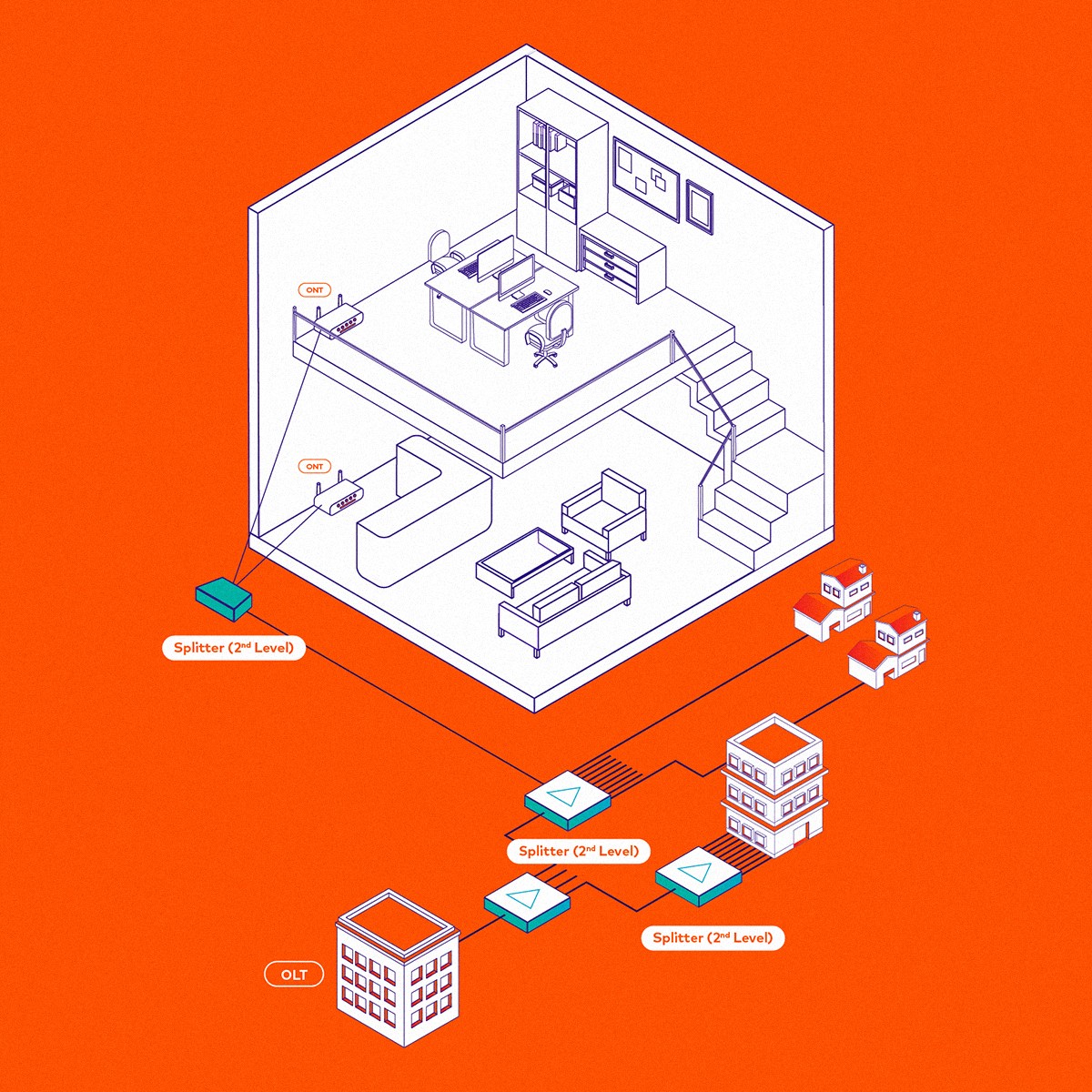What is a fiber optic splitter and what is it for?
Introduction
A splitter is a device used to split a light beam that travels over a fiber and send it over 2 or more fibers, increasing the number of links in a network. Today we will talk about the meaning and purpose of a fiber optic splitter.
Development
What is?
The splitters are small devices that can split one light beam to two or more beams, as explained before.
The main goal of this application is to interconnect an OLT to several ONTs allowing expansion to multiple network points.
The reduced costs are due to this ability of scalability, increase and manage a communication network.
What types are there?
The most common types of splitters are the FBT (Fused Biconical Taper) splitter and the PLC splitter (Planar Lightwave Circuit) splitter.
How it works?
The first type, FBT, uses a more traditional technology to weld fibers together where this is then protected by a glass substrate, then a stainless-steel tube covers the inner glass tube and finally the set is sealed with silicone.
The PLC splitter uses a more complex technology based on an integrated quartz substrate that distributes optical energy using the principle of light waves. It splits the light beam emitted from an input fiber into multiple light beams for multiple output fibers at a given ratio.
To explain the principle of operation in simpler terms, the light emitted through a singlemode fiber cannot be 100% concentrated in the fiber, resulting in a loss of energy that is released through the cladding of the fiber. In other words, if you put two fibers close enough together, the light emitted in one fiber can be transmitted to the other. So it is on this principle that the splitter comes up so that this adjustment of the optical signal can be done for several fibers and in a controlled way.
When we speak, for example, of a splitter configured as 1×8, it means that we have 1 fiber at the input for 8 fibers at the output, transmitting 8 individual equal signals.
Where are they applied?
Splitters have an important function in PON networks as they allow multiple subscribers to be connected using just one interface.
They can be applied in networks of the type:
• EPON
• GPON
• BPON
• FTTX
• FTTH
• Etc
For more information see our ebook on GPON.
How to choose a splitter?
Splitters, like any component in a network, must meet certain parameters so that their performance is not affected.
The most important parameters to evaluate are:
• Wavelength range (nm);
• Insertion Loss (dB);
• Uniformity of insertion loss (dB);
• Return Loss (dB);
• Polarization Dependent Loss (dB)
• Directivity (dB);
• Operating Temperature (°C)
PLC splitter is without any doubt the most stable, with lowest losses, can work in a wider wavelength range because it doesn’t have high variation in insertion loss, split ratios equal and balanced per fiber, low failure rate, wider range of temperatures (-40°C to 85°C) and is a very compact solution. In addition, it is the ideal solution for PON networks because it has great flexibility and expansion capability.
Due to the restricted wavelength range and high insertion loss, the FBT splitter is most used for ratios up to 1:8. Also due to manufacturing process and the materials that make it up are simpler, this is a more economical solution.
Conclusion
Therefore, splitters allow you to divide a fiber optic signal into two or more signals. With a high capacity of scalability, increase and management of a communication network, these are ideal for use in PON networks.
There are essentially two distinct types, the FBT and the PLC splitter.
The last one is the one that barpa recommends, precisely for its quality and stability.
Splitters play a very important role in a network because, in addition to not needing any type of electrical power source to operate, they allow a multiplication of the connections in the network.
Thus, we believe that this product can be something very important for those who want to build a network that can last for many long years.






Sorry, the comment form is closed at this time.